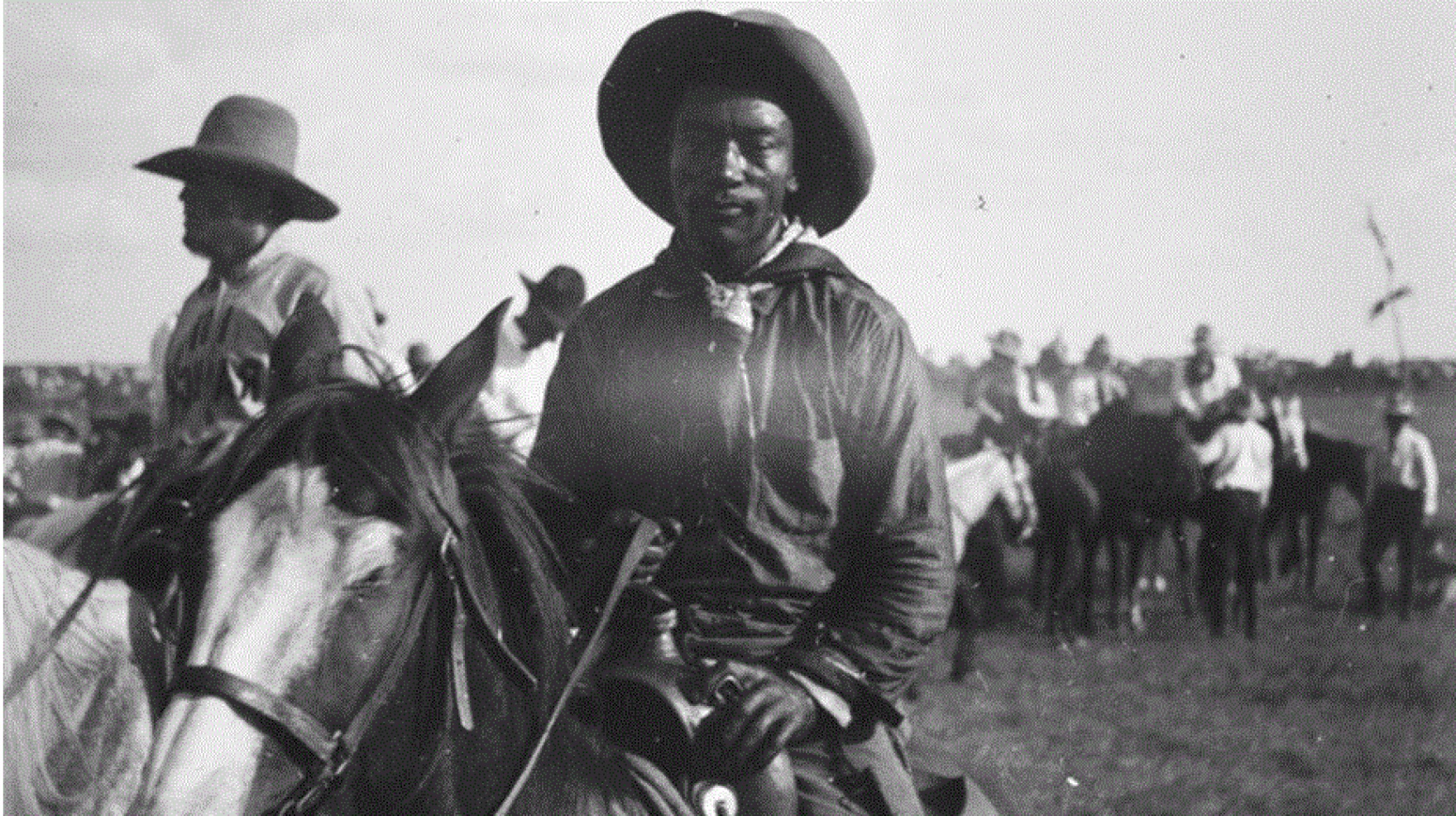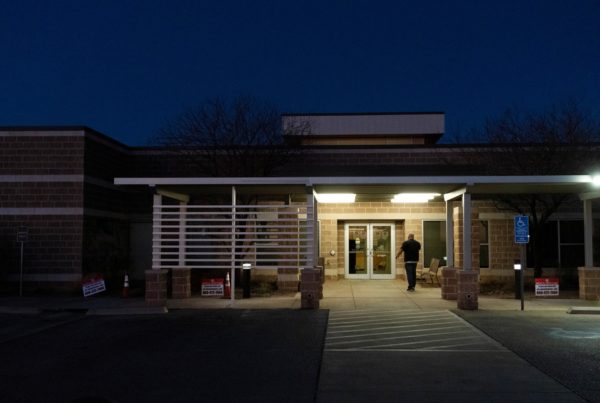The traditional story of the Wild West needs a re-write to make it historically accurate.
The cherished fable of the horseback hero of the open range doesn’t reflect the actual racial diversity of the cattle drive.
For example, the 1960s cowboy TV show “Rawhide” was a fictionalized portrayal of the 1870s cattle trail. The characters, including Rowdy Yates played by a young Clint Eastwood, were all white. But — in fact — one in four of the cowboys on the trail was Black.
“A number of the cowboys were born in slavery and they began their journey as cowboys enslaved, as enslaved children,” said Ronald Davis, a Ph.D. candidate in history at the University of Texas at Austin.
He co-curated the Witte exhibit The Black Cowboy: An American Story. It tells the story of how frequently Black people did the tough and perilous work of settling the West.
“It was cold. It was wet. It was dangerous. There were stampedes there. There was all kinds of different problems that they could run into from, from rainstorms and crossing swollen rivers to where a lot of cowboys died,” Davis said.
While Hollywood was active in white-washing this from the popular imaginary Western history, there were some notable exceptions — like the 1974 comedy “Blazing Saddles.”
Larry Callies said writer and director Mel Brooks got it right .
“Somebody knew something back then,” he said.
Callies founded the Black Cowboy Museum in Rosenberg, Texas, and he’s featured in the Witte exhibit.
He said there was a real Black lawman much like Sheriff Bart, played by Cleavon Little in Blazing Saddles. His name was Bass Reeves.
“He was born in 1838. He was a slave. And when he turned 15, he hit his master and he ran from Texas to Oklahoma and he became a sheriff. When he was freed he became a U.S. Marshal,” said Callies.
Callies said Reeves was the basis of the story of the Lone Ranger. In fact, the term “cowboy” originally only applied to Black men who herded cattle, Callies said.
“They had a house boy. They had a yard boy and somebody worked the cows and he was called a cowboy,” he said adding that the white men on the cattle trail preferred to be called cattle hands.
Davis said on the cattle drive was one of the only places where there was some racial equality.
“You have the words of a few Black cowboys available to tell you what their experiences were and what they tell you is how on one hand, that Black cowboys and white cowboys made no difference of their race — which I can certainly see, because in the stampede, it doesn’t matter,” he said.
They were also paid the same wages but there were still some inequalities in the amount of work that was expected from the Black cowboys.
“The Black cowboy on the cattle drive were often expected to do extra work, like break a horse that was kind of difficult, or they would stand extra watches,” he said.
Hollywood doesn’t get all the blame for ignoring the contributions of the Black cowboys, historians were also guilty. Marise McDermott, the president and CEO of the Witte Museum, said that’s why the exhibit on Black cowboys is so important and why it was critical to find primary sources to back it up.
“Everything had to stand the test of evidence as journalism. And if there was anything ideological or interpretive, we took it out,” said McDermott.
Some western stories may sound too fantastic to be true but the Legend of Bill Pickett, the first bulldogger, holds up.
“Steer wrestling to the ground, that was him. He invented it,” Davis said. “The story is when he was young, he was watching some hands manage some difficult bulls. And he noticed that a bulldog went up to the cattle and bit its lip. And that was how it controlled it. And so the legend is that he, at some point in time, saw some cow hands having a hard time with cattle. And he jumps in and bites the cow by the lip and it takes it to the ground and controls it.”
Pickett turned it into a rodeo event. He made silent films of his skill. And is perhaps the most famous of the Black cowboys.
Cowboy Callies said it’s no accident that Black cowboys were erased from the westerns and trying to correct that error in Texas classrooms is now controversial and mislabeled critical race theory.
“They don’t want people to know. Black history is American history but they call it the critical race theory,” he said.
And co-curator Davis points out that struggle the Black cowboys has a lot to teach us today.
“The story of the Black cowboy is a story where America was at and how far we’ve gone and how much further we have to go,” he said.
The Witte exhibit, “The Black Cowboy: An American Story,” runs through April 2202.













